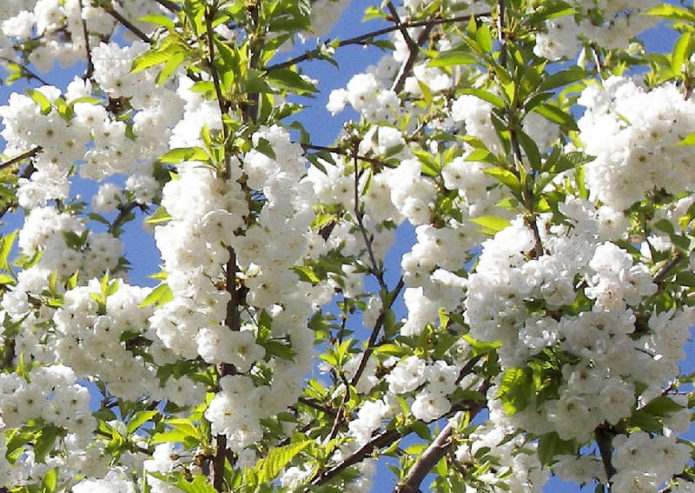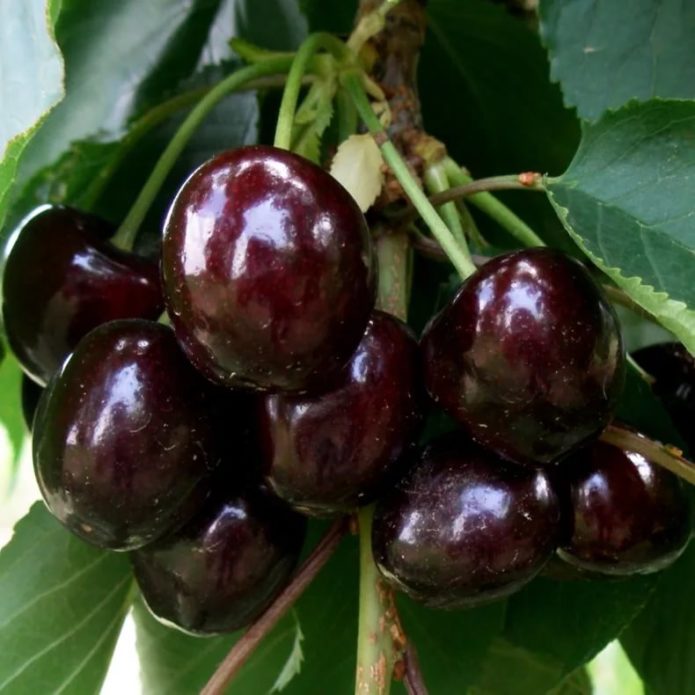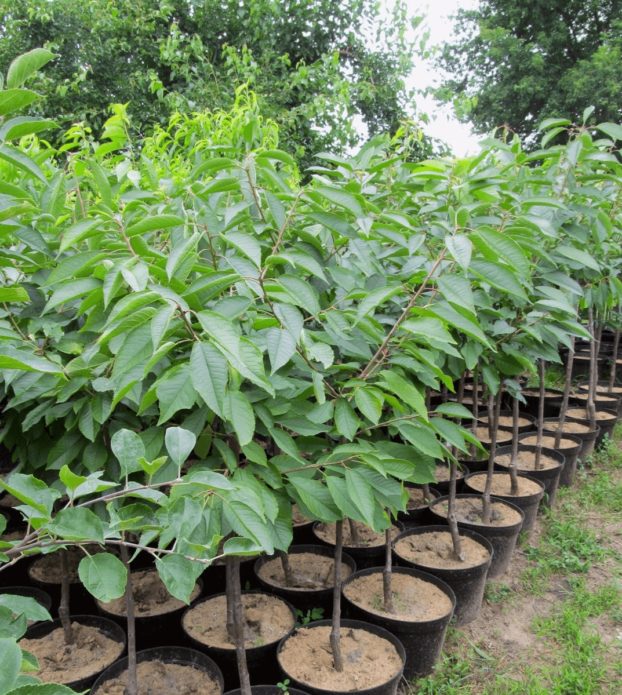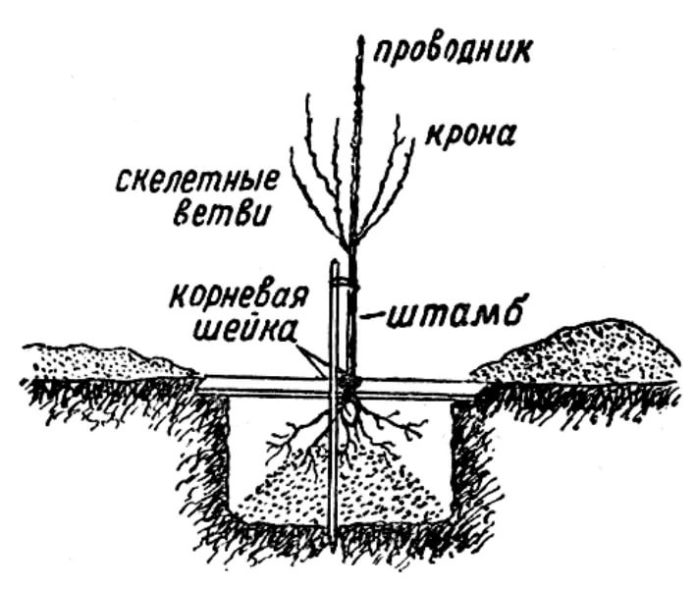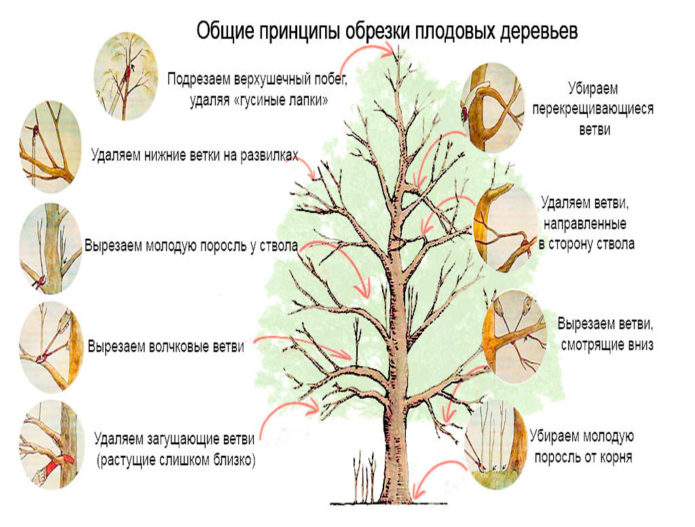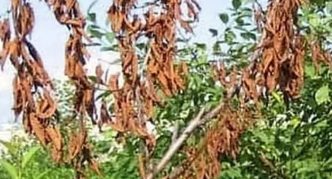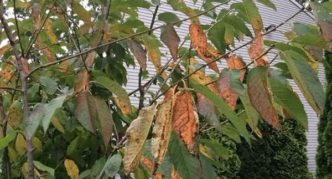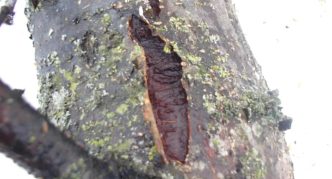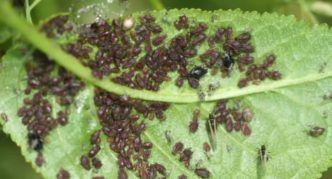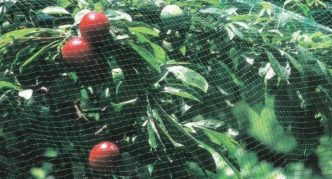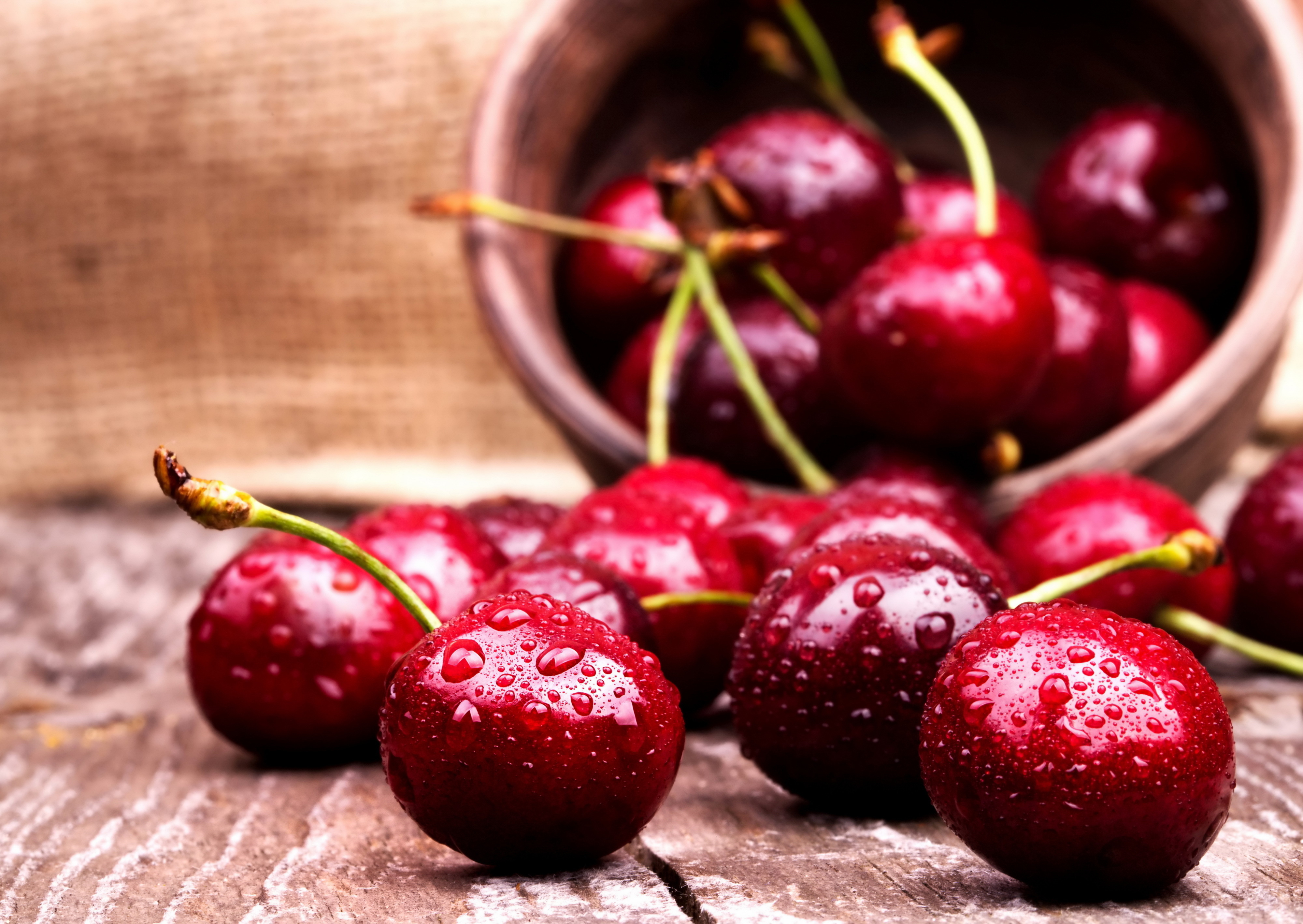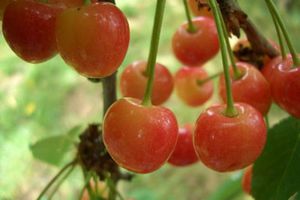Cherry is traditionally considered an inhabitant of the southern regions. But modern varieties bear fruit abundantly in central Russia. These include the Iput cherry. Due to its excellent taste and high yield, this crop is widespread in industrial gardening organizations and in summer cottages.
Content
The history of the origin of the Iput cherry variety
Iput is an early ripe sweet cherry, bred by a team of breeders under the leadership of M.V. Kanshina at the All-Russian Research Institute of Lupine. It belongs to highly productive winter-hardy varieties, suitable for cultivation in the Non-Black Earth Region and in the Southern Urals. Iput was entered in the State Register in 1993.
Description of the variety
Regions of admission for sweet cherries of the Iput variety are Central and Central Chernozem. Mature trees are tall, with a wide, pyramidal, well-leafed crown. The trunk and shoots are powerful, smooth, straight, grayish. Dark green leaves are large, long, sharpened at the tip. The vegetative bud has the shape of an elongated cone, while the generative bud has a rounded base and an ovoid shape.
The corolla of the flower is white. The stamens and pistil are at the same level, but the variety is self-fertile. Umbrella type inflorescences usually consist of 3-4 flowers.
Ripe fruits are colored dark red, almost black. The base of the berries is wide, with a white dot visible on the rounded top. The fruits are easily separated from the petioles. The average weight of berries is slightly more than 5 g. The fruits are generally even in size and weight, but there are also large ones, up to 10 g. The pulp is red in color, medium density, tender and sweet. The juice is red. The stone is small, easily separated from the pulp.
The sugar content of Iput cherries is only 11%, but due to the low acid content (0.5–0.7%), the taste is sweet.
Cherry Iput blooms early and gives a regular early harvest. After planting, seedlings usually begin to bear fruit in the 4th or 5th year. The yield of mature trees is more than 100 kg / ha, but this requires pollinators. They are selected taking into account the fact that Iput is an early sweet cherry variety. The best pollinating trees are:
- Raditsa;
- Jealous;
- Bryansk pink;
- Ovstuzhenka;
- Tyutchevka.
The taste and yield of cherries are favorably influenced by cherries growing nearby.
Sweet cherry Iput has good frost resistance. According to the observations of experts, less than a quarter of the generative buds freeze in a harsh winter. The variety is slightly affected by diseases and pests.
Landing
For landing, choose an elevated illuminated place, protected from cold winds. The composition of the soil should be fertile, drainable: sandy or light loam. Cherry does not tolerate stagnant water, therefore, it is necessary to remove from the underlying groundwater at least 1.5–2 m. The optimal soil environment for cherries is slightly acidic, close to neutral.
For abundant fruiting, the Iput cherry variety needs pollinators, therefore, when planting, holes for several trees are provided. The distance between them should be at least 3-4 m, since the crown of the sweet cherry is wide.
For planting, it is better to purchase container seedlings in reliable nurseries. Plants with a closed root system can be planted both in spring and autumn, unlike trees with open roots (it is recommended to plant them only in spring).
For landing:
- Dig a hole 80x80x70 cm in size with sheer edges.
- The top fertile layer is separated and mixed with compost and humus, you can add 1 liter of ash.
- At the bottom of the pit, drainage is poured about a quarter of the depth. Gravel is suitable for this purpose.
- After filling the hole to a height of half, check the level of the root collar of the seedling (it should rise 5–6 cm above the soil), fix the planting peg, place the seedling on the north side of it, fill the hole, trying not to leave voids.
- The trunk circle is carefully tamped, forming an irrigation hole.
- Tie the seedling to a peg.
- Sprinkle abundantly with water.
- The trunk circle is mulched with rotted manure or dry peat.
During the summer, you can cover the near-trunk circle with freshly cut grass, it will act as mulch, preventing weeds from growing. Gradually decomposing, the greens will provide the seedling with moisture and organic matter.
It is advisable to prune the stem immediately after planting at a height of 60–65 cm. As a result, the seedling will begin to form branches at a lower level.
Video: pruning cherries after planting
Features of growing and care
The cultivation of Iput cherries does not fundamentally differ from caring for other varieties.
Crown formation
In the first summer after planting, young shoots appear on the seedling. The next year, the strongest, most distant branches are chosen, the rest are removed. The remaining ones are shortened by 1/3 for the external kidney.
Skeletal branches should be about the same length, and the conductor should be 20-30 cm higher.
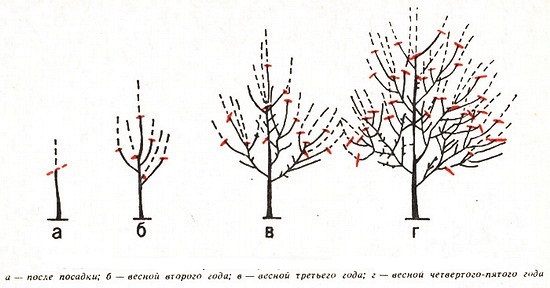
Regular pruning improves the illumination of the crown, provides better nutrition for the branches, which has a beneficial effect on the harvest
In the future, they try to provide the crown of the sweet cherry with a 3-4-tiered structure. After the 4th year, pruning is reduced to maintaining the shape of the crown, removing sick, weak, thickening and damaged branches. Regular pruning improves the illumination of the crown, provides better nutrition for the remaining branches, which favorably affects the taste of the berries and the amount of harvest.
Pruning is carried out in early spring. The day should be sunny for the slices to heal better. For reliability, they are lubricated with garden pitch.
Injury to the bark causes the gum to leak. To avoid this, it is better to break out young top shoots in the summer, without waiting for lignification. Some gardeners carry out summer pruning, combining it with the harvest of sweet cherry.
Watering
It is necessary to provide trees with irrigation during important periods of life: during flowering and ovary formation. When watering, add up to 3-4 buckets of water under each tree. It must be remembered that excess moisture can lead to cracking of the berries, and this will significantly worsen the quality of the crop and its presentation.
The next important watering time is right after harvest. Cherry Iput is an early variety, therefore, if the summer is not rainy, it is worth shedding the trees abundantly again in the fall about a month before the expected frost. After watering, the trunk circle should be mulched and make sure that the soil under the shelter does not dry out.
Disease prevention and protection of cherries from pests
Diseases and pests of the Iput cherry variety are slightly affected, but it is better to take care of planting protection in advance.
- By processing with a 1% solution of copper sulfate or Bordeaux liquid in early spring, during flowering and immediately after harvest, cherries are relieved of the danger of moniliosis. With this disease, leaves and young branches suddenly begin to dry in the spring. Sick branches must be cut off and burned immediately.
- Another scourge of stone fruits is coccomycosis, the causative agent of which can withstand the lowest temperatures, and during a humid warm summer, it affects plantings of sweet cherries, cherries, cherry plums and other stone fruits. At the same time, the leaves turn yellow ahead of time, become covered with dark spots and fall off. At the first signs of coccomycosis, trees are sprayed with a solution of soda ash at the rate of 50 g per bucket of water, adding 50 g of laundry soap. All treatments are carried out after harvest.
Copper preparations, copper sulfate, and Bordeaux liquid also help in the fight against coccomycosis.
- To prevent sunburn and the formation of frostbites, they carry out the autumn whitewashing of trunks and skeletal branches.
- To prevent the spread of black aphids, anthills around the plantings of sweet cherries are destroyed.
- To protect the tree from birds, gardeners stretch a net over the cherry. This is the most effective way to save the crop from birds.
Photo gallery: diseases and pests of sweet cherry
- Treatment with Bordeaux liquid will save the tree from moniliosis
- Due to coccomycosis, the leaves of the tree turn yellow prematurely
- To prevent sunburn and frost damage, it is necessary to whitewash the cherry trunk
- To prevent the spread of black aphids, anthills are destroyed around the plantings of sweet cherry
- The stretched net will protect the crop from birds
Reviews
… I have Iput - the most delicious. They are excellent, sweet, large, they crack, however, it happens, and the stone is not very well separated, but because of the taste you can put up with it.
I went to the market and tried one berry from the seller, I liked it and I asked what sort it was, to which he replied that it was Iput. Basically, I didn't care and I bought it. As it turned out later, Iput is an early ripe sweet cherry that grows on vigorous trees. The cherry was tasty and juicy.
Bryansk pink and Iput bloom almost at the same time, the difference in blooming was 3-4 days last year, Iput blooms a little later. But the period overlaps, plus the pollen on the bees remains active for a week or even more. The main thing is to protect from the sun in February-March, their trunks burst strongly from temperature changes.
Thanks to the efforts of scientists-agronomists, cherries have stepped far beyond their natural growing area. Amateur gardeners in many regions of Russia have the opportunity to grow their own berries and enjoy an early harvest. Cherry thanks for its caring care with healthy and tasty fruits.
